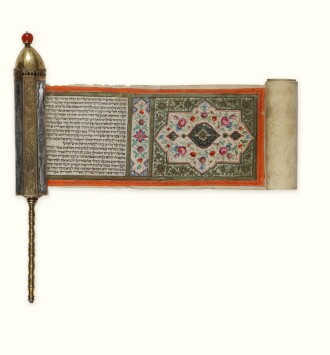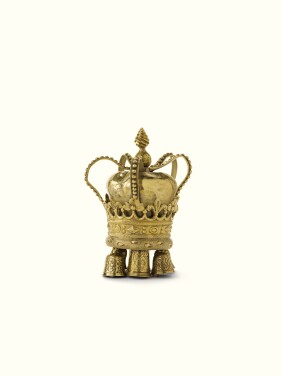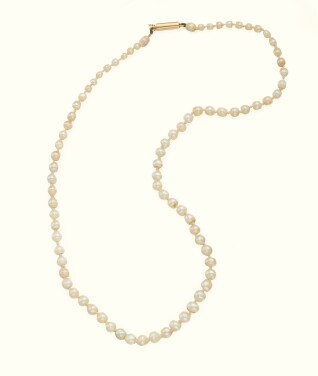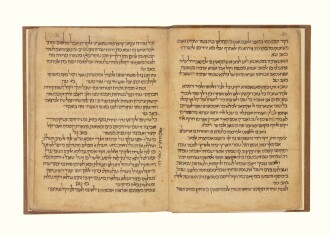The Sassoon Family Collection
S
otheby’s is pleased to continue our long association with the Sassoon family in presenting SASSOON: A Golden Legacy, a further group of rare and important Judaica from the family collection of the fabled “Rothschilds of the East.” The silver pieces, manuscripts, and textiles that feature here were assembled over the course of more than a century, and range geographically from Western Europe to the Far East and chronologically from the eleventh to the twentieth centuries. We have endeavored in the present catalogue to pay tribute to the Sassoon family’s many years of dedication to the patronage and preservation of Jewish scholarship, art, and material culture of the highest caliber.
The Sassoons in Baghdad & India
T
he patriarch of the Sassoon dynasty, David (1792-1864), was one of seven children born in Baghdad to his father Sassoon ben Saleh (1750-1830), a wealthy businessman who served as chief treasurer to the local Ottoman pashas and nasi (president) of the Babylonian Jewish community. Because of the practice of some Jewish families for sons to add their father’s given names to their own, David came to be known as David Sassoon, whence the surname. After receiving a traditional Jewish education, David married Hannah (Aziza) Joseph of Basra (1792-1826), who bore him four children in Baghdad; following her premature death, he wed Flora (Farha) Hayyim (1812/1814-1887), mother of ten further daughters and sons in Bombay.
The Sassoons in the Far East
W
ith the signing of the Treaty of Nanking in 1842, which ended the First Opium War and established the right of foreigners to trade at five Chinese ports, David Sassoon recognized an opportunity to expand his commercial activities into the Far East. For this purpose, in 1844 he sent his second son, Elias (1820-1880), to Canton (present-day Guangzhou, China). A savvy businessman, Elias would go on to found successful branches of his father’s company in Hong Kong, Shanghai, and elsewhere. Over the years, his brothers Sassoon, Albert, Reuben, Arthur, and particularly Solomon and Frederick all did stints of varying lengths in the Far East as well, allowing the firm to extend its reach to Rangoon (present-day Yangon, Myanmar), Singapore, Yokohama, Nagasaki, and Kobe.
The Sassoons in England
T
he United Kingdom proved to be an attractive new home for many of the upwardly-mobile children and descendants of David Sassoon. The first son to visit England was Arthur (Abraham Shalom; 1840-1912), who came in 1855 to study under Dr. Hermann Adler, future Chief Rabbi of the British Empire. While he later returned to his native India and traveled to China, he and his wife Eugenie Louise Judith (1854-1943) eventually moved to the British seaside town of Hove, leading a life of luxury and associating regularly with royals like Albert Edward, Prince of Wales (later: King Edward VII), and his son George Frederick Ernest Albert, Duke of York (later: King George V).
Philip Salomons
P
hilip Salomons (1796-1867) was the son of Levy Salomons and Mathilda Metz. He traveled in America when young, joining the household of Aaron Levy in New York in 1824, and became a naturalized American citizen in 1826; a cane of wood from Washington’s tomb at Mount Vernon is preserved in the Salomons museum at Broomhill, Tunbridge Wells, Kent. However, Philip returned to England later that year and resumed his British citizenship, becoming a financier in the City of London, like his father and his younger brother David. He also followed his father as a Warden for the New Synagogue, London, and presented his father’s 400 volumes of “Hebrew and Rabbinical works” to the Guildhall Library in London (transferred in the later twentieth century to the Mocatta Library). Philip was friends with the artist David Roberts, who gave him in 1846 a fragment of the Western Wall acquired in Jerusalem while Roberts was working on his famous Sketches in the Holy Land and Syria.
Reuben David Sassoon
D
avid Sassoon’s fourth son, Reuben (1834-1905), who grew up in India, was recognized early on as mathematically gifted, quick-witted, wise, industrious, commercially savvy, and well-mannered; it was said of him that he had no enemies. When he came of age, he was sent by his father to conduct family business first in Hong Kong, then in Shanghai, but in 1860 he was called back to Bombay. Following his father’s passing, his older brother Sassoon required assistance in London, and so Reuben, his family, and his widowed mother moved there in 1867, the year of Sassoon’s own premature death.
Solomon and Flora
L
ike Elias, Solomon (Sliman; 1841-1894), David Sassoon’s seventh son, split his career between India and China and never settled in England. He spent the years 1857-1875 in Shanghai and Hong Kong, returning to India to head the Bombay offices of the family business around the time his older brother Albert immigrated to Great Britain. In 1883, under Solomon’s direction, David Sassoon & Co. expanded into silk production with the founding of the Sassoon and Alliance Silk Manufacturing Co., Ltd. Solomon also served as director of the Bank of Bombay and a trustee of the Bombay Port Trust and was heavily involved in several other businesses as well.
David Solomon Sassoon
U
ndoubtedly the most avid and prolific collector of Judaica of the Sassoon dynasty was David Solomon Sassoon. Born December 8, 1880 in Bombay, David was named for his paternal grandfather. Like his mother, David was educated in Jewish subjects, as well as Arabic reading and writing, by imported Baghdadi tutors, namely Rabbis Isaac Agassi and Joshua Abraham (1854-1915), the latter a descendant of the aforementioned Rabbi Sason Shindookh. By the age of eight, David writes in Divrei david, he knew the prayers for the entire liturgical year and practically the entire Hebrew Bible by heart. Also like his mother, he received his general education at a local non-Jewish (in this case, Anglican) institution, St. Peter’s High School.










































































